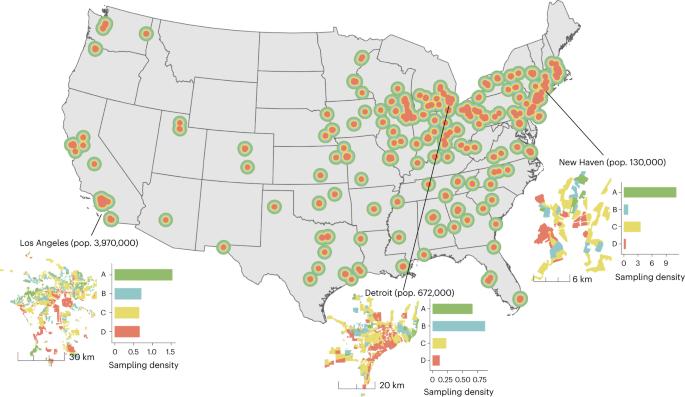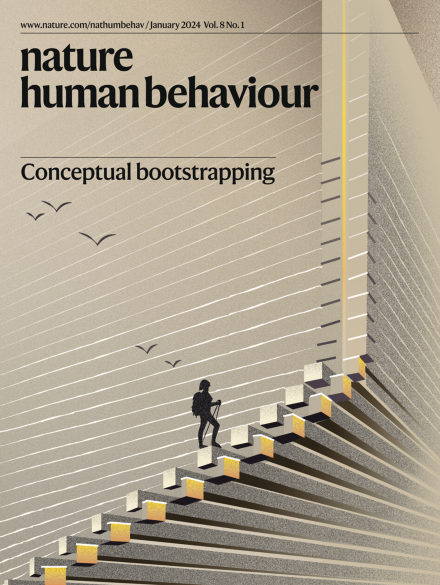Historical redlining is associated with increasing geographical disparities in bird biodiversity sampling in the United States
IF 21.4
1区 心理学
Q1 MULTIDISCIPLINARY SCIENCES
引用次数: 1
Abstract
Historic segregation and inequality are critical to understanding modern environmental conditions. Race-based zoning policies, such as redlining in the United States during the 1930s, are associated with racial inequity and adverse multigenerational socioeconomic levels in income and education, and disparate environmental characteristics including tree canopy cover across urban neighbourhoods. Here we quantify the association between redlining and bird biodiversity sampling density and completeness—two critical metrics of biodiversity knowledge—across 195 cities in the United States. We show that historically redlined neighbourhoods remain the most undersampled urban areas for bird biodiversity today, potentially impacting conservation priorities and propagating urban environmental inequities. The disparity in sampling across redlined neighbourhood grades increased by 35.6% over the past 20 years. We identify specific urban areas in need of increased bird biodiversity sampling and discuss possible strategies for reducing uncertainty and increasing equity of sampling of biodiversity in urban areas. Our findings highlight how human behaviour and past social, economic and political conditions not just segregate our built environment but may also leave a lasting mark on the digital information we have about urban biodiversity. In this study of bird biodiversity data from across 195 US cities, Ellis-Soto et al. show that historical redlining is associated with increasing inequality in sampling. Historically redlined neighbourhoods remain the most undersampled areas.

历史红线与美国鸟类生物多样性采样的地理差异增加有关。
历史上的种族隔离和不平等是理解现代环境条件的关键。以种族为基础的分区政策,如20世纪30年代美国的红线政策,与种族不平等、收入和教育方面的不利的多代社会经济水平以及不同的环境特征(包括城市社区的树冠覆盖)有关。在这里,我们量化了美国195个城市的红线与鸟类生物多样性采样密度和完整性(生物多样性知识的两个关键指标)之间的关系。研究表明,历史上被划红线的社区仍然是鸟类生物多样性采样最不足的城市地区,这可能会影响保护重点,并加剧城市环境不平等。在过去的20年里,红线标出的社区等级的抽样差异增加了35.6%。我们确定了需要增加鸟类生物多样性采样的特定城市地区,并讨论了在城市地区减少不确定性和增加生物多样性采样公平性的可能策略。我们的研究结果强调,人类行为和过去的社会、经济和政治条件不仅隔离了我们的建筑环境,而且可能在我们拥有的关于城市生物多样性的数字信息上留下持久的印记。
本文章由计算机程序翻译,如有差异,请以英文原文为准。
求助全文
约1分钟内获得全文
求助全文
来源期刊

Nature Human Behaviour
Psychology-Social Psychology
CiteScore
36.80
自引率
1.00%
发文量
227
期刊介绍:
Nature Human Behaviour is a journal that focuses on publishing research of outstanding significance into any aspect of human behavior.The research can cover various areas such as psychological, biological, and social bases of human behavior.It also includes the study of origins, development, and disorders related to human behavior.The primary aim of the journal is to increase the visibility of research in the field and enhance its societal reach and impact.
 求助内容:
求助内容: 应助结果提醒方式:
应助结果提醒方式:


